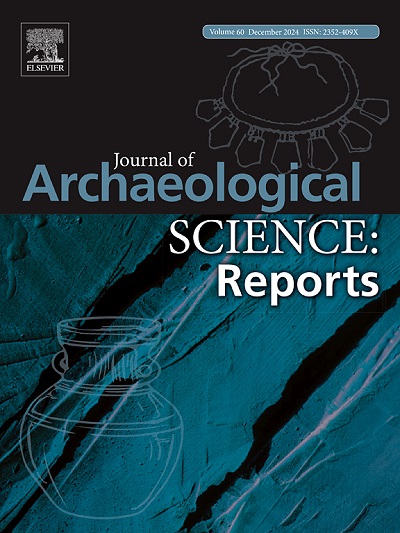A quantitative approach to decoding pottery technology: Confocal microscopy applied to the traceological and textural analysis of surface treatment
IF 1.5
2区 历史学
0 ARCHAEOLOGY
引用次数: 0
Abstract
Among the various phases of pottery production and use that can be examined through traceological analysis, surface treatment remains one of the least explored. Understanding certain phases of past production processes through material remains often necessitates the establishment of reference frameworks that facilitate the identification and characterization of the actions responsible for their formation. In this context, experimental archaeology provides a means to reconstruct the relationships between the archaeological record and past technological practices.
This study proposes an experimental program focused on the surface treatment of pottery and the tools employed in these processes, with a primary emphasis on the categories of tools utilized in the production of prehistoric handmade ceramics. The central hypothesis posits that distinct tools generate distinguishable surface traces. To systematically document and characterize the traces produced by various tool types—including pebbles, flint spatulas, pottery spatulas, shell spatulas, linen rags, grass, and leather—a comprehensive catalogue has been compiled. This catalogue integrates visual documentation with qualitative data on surface traces and overall appearance.
Additionally, confocal microscopy was tested as a means to quantitatively assess the visual differences observed between distinct surface treatments. The findings indicate that confocal microscopy is both a precise and accessible technique for measuring surface microtexture. The results underscore the methodological potential for traceological and textural analysis of ceramic surface treatments. The ability to differentiate between various surface treatment techniques offers new avenues for the study of prehistoric pottery, enhancing our understanding of ancient ceramic production practices.
解码陶器技术的定量方法:共聚焦显微镜应用于表面处理的痕迹学和纹理分析
在陶器生产和使用的各个阶段,可以通过追溯分析来检查,表面处理仍然是最少探索的一个。通过材料残留物了解过去生产过程的某些阶段通常需要建立参考框架,以促进识别和描述导致其形成的行为。在这种背景下,实验考古学提供了一种重建考古记录与过去技术实践之间关系的手段。本研究提出了一个实验计划,重点关注陶器的表面处理和这些过程中使用的工具,主要强调史前手工陶瓷生产中使用的工具类别。中心假设假定不同的工具产生可区分的表面痕迹。为了系统地记录和描述各种工具类型(包括鹅卵石、燧石铲、陶器铲、贝壳铲、亚麻布抹布、草和皮革)产生的痕迹,编制了一个全面的目录。该目录整合了表面痕迹和整体外观的视觉文档与定性数据。此外,共聚焦显微镜作为定量评估不同表面处理之间观察到的视觉差异的一种手段进行了测试。研究结果表明,共聚焦显微镜是一种测量表面显微结构的精确且易于使用的技术。结果强调了陶瓷表面处理的痕迹学和纹理分析的方法学潜力。区分各种表面处理技术的能力为史前陶器的研究提供了新的途径,增强了我们对古代陶瓷生产实践的理解。
本文章由计算机程序翻译,如有差异,请以英文原文为准。
求助全文
约1分钟内获得全文
求助全文
来源期刊

Journal of Archaeological Science-Reports
ARCHAEOLOGY-
CiteScore
3.10
自引率
12.50%
发文量
405
期刊介绍:
Journal of Archaeological Science: Reports is aimed at archaeologists and scientists engaged with the application of scientific techniques and methodologies to all areas of archaeology. The journal focuses on the results of the application of scientific methods to archaeological problems and debates. It will provide a forum for reviews and scientific debate of issues in scientific archaeology and their impact in the wider subject. Journal of Archaeological Science: Reports will publish papers of excellent archaeological science, with regional or wider interest. This will include case studies, reviews and short papers where an established scientific technique sheds light on archaeological questions and debates.
 求助内容:
求助内容: 应助结果提醒方式:
应助结果提醒方式:


